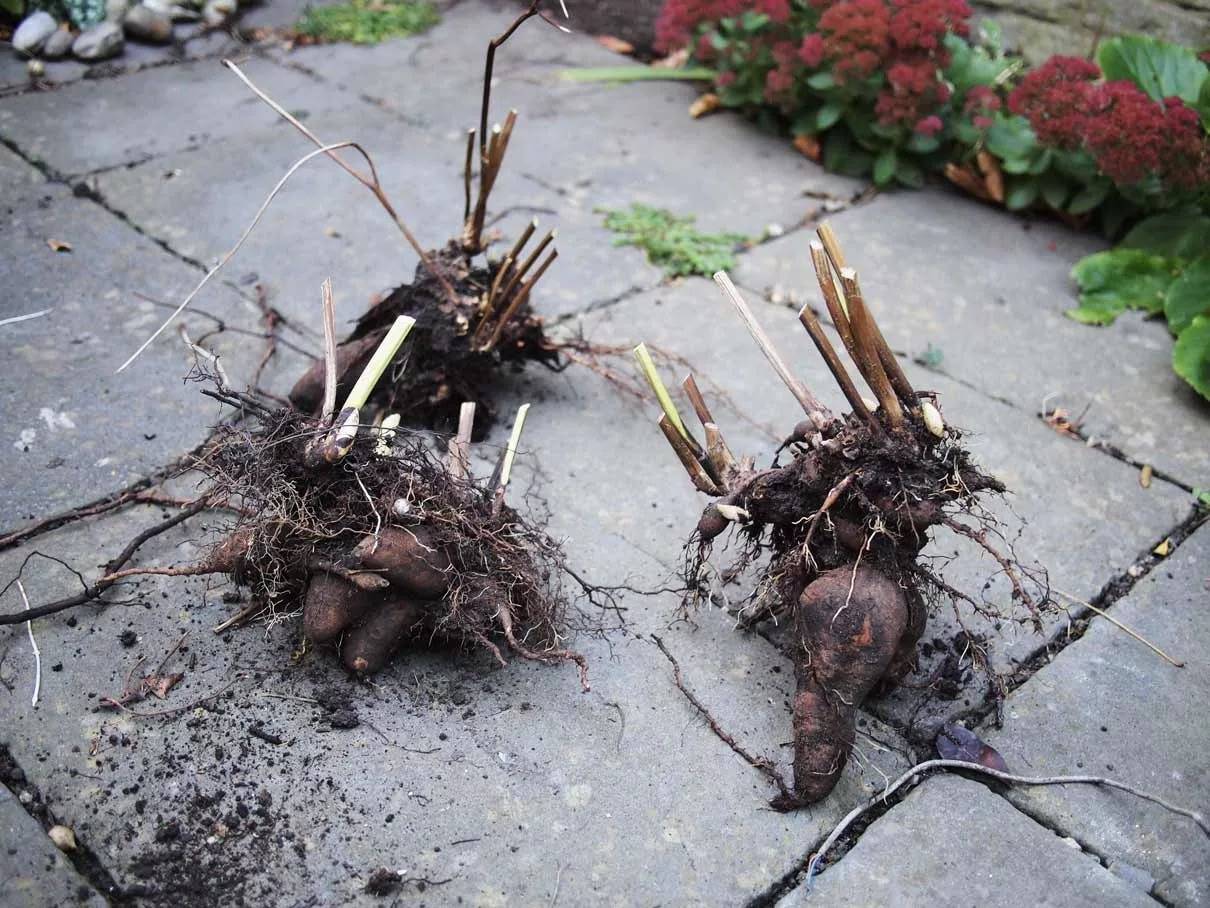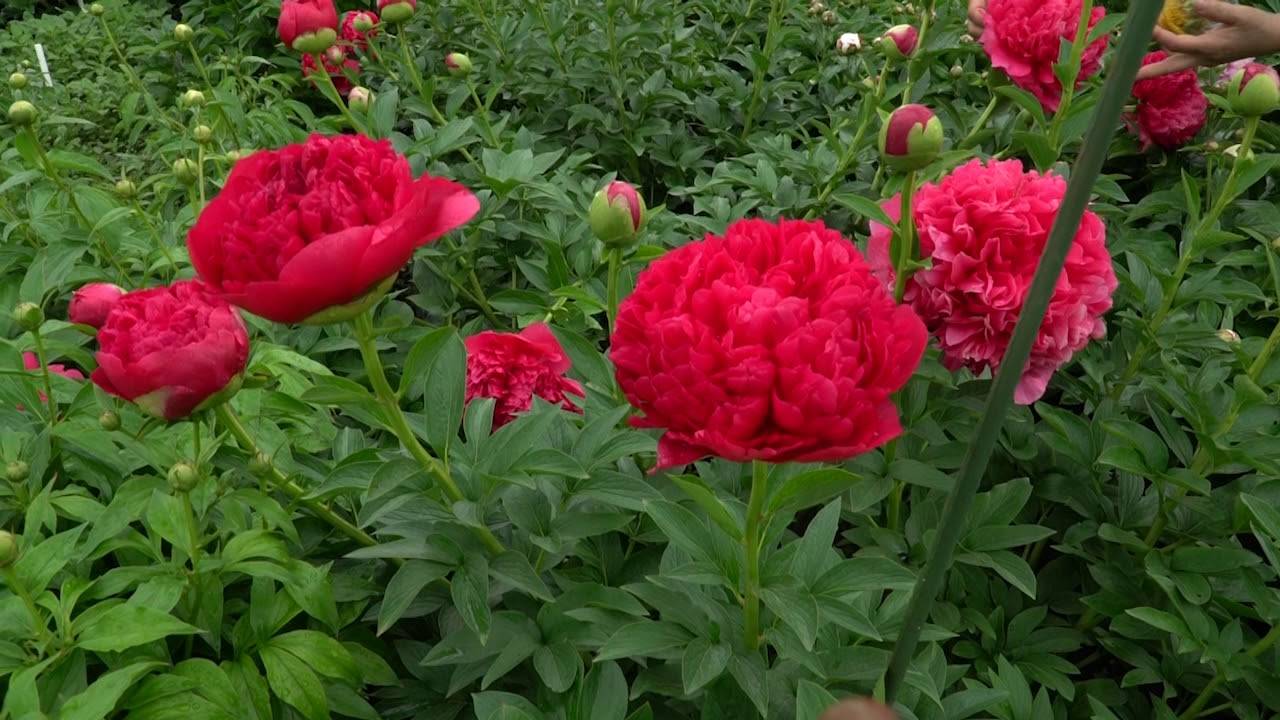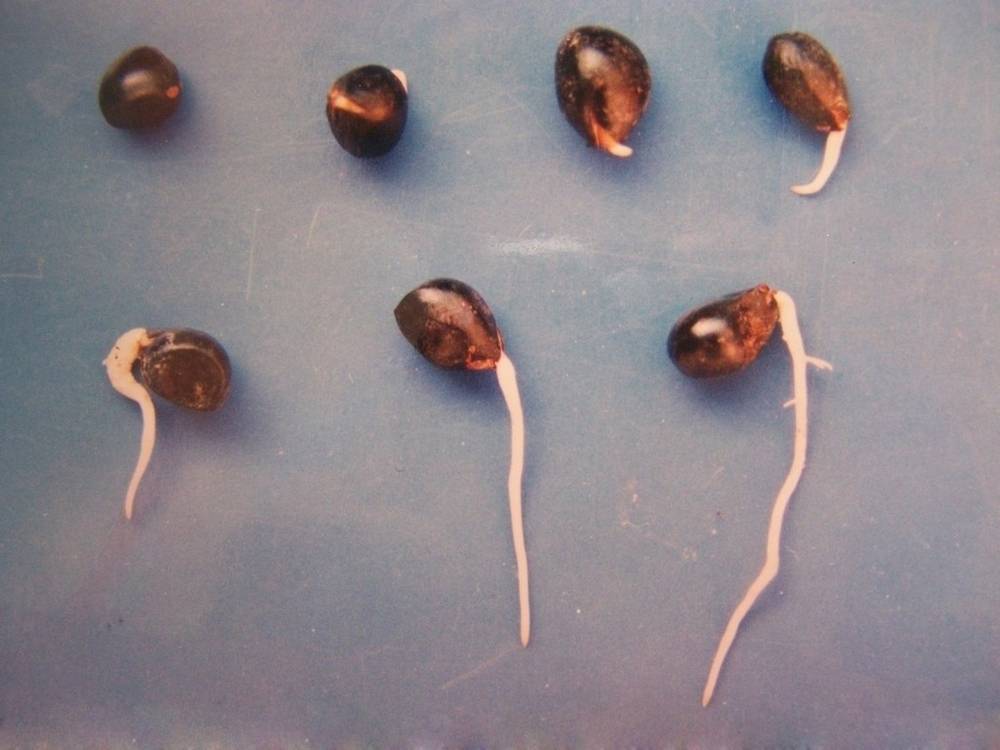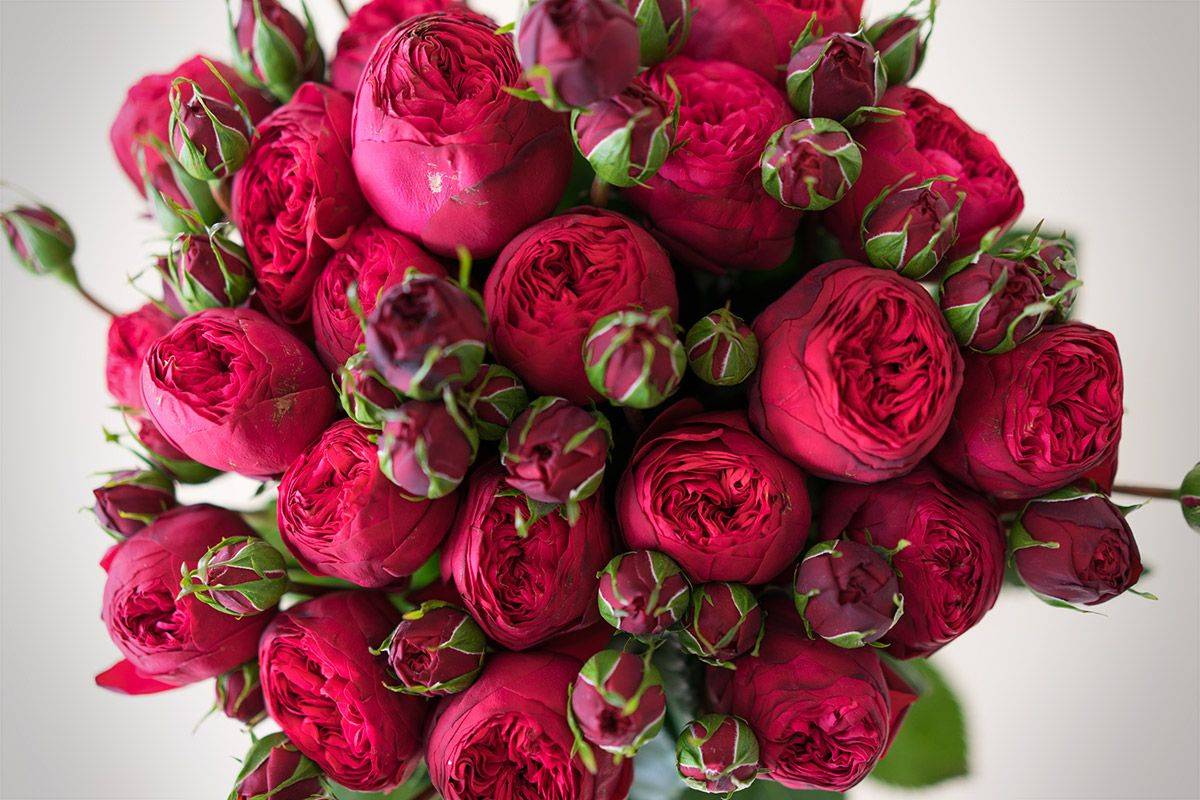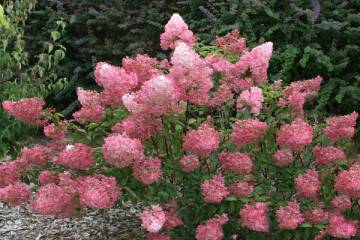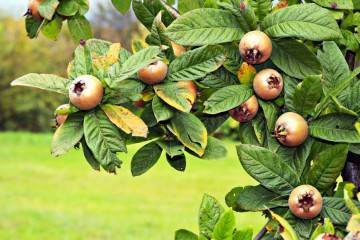Peony Team Performance - cultivation of a variety in the garden
Content:
In the world of peonies, Paeonia Command Performance has a special place. It blooms well, charming outside of the flowering period. The culture is suitable for decorating gardens, parks. Suitable in combination with almost all garden plants.
Peony Command Performance (Paeonia Command Performance) - what is this variety
The homeland of the variety is the United States. In any case, in 1996 it was included in the register of peonies there. He also won the title of Grand Champion at the exhibition.
Brief description and characteristics
The adult peony bush Command Performance is quite voluminous. Its height reaches 0.8 m, the diameter of the crown is about 1 m. The stems are powerful and erect. The lower third of them are without leaves. Leaves are dense green patterned. The buds of the hybrid are single, large, bright red.
Advantages and disadvantages of the variety
The main advantage of the variety is frost resistance. The bushes are able to withstand frosts down to -40 ° C. The plant is also resistant to disease, drought and undemanding to the composition of the soil.
The disadvantage of the hybrid is considered intolerance to direct sunlight. In the sun, the petals fade, turn pale. The flowering period is reduced. The flower also does not tolerate full shadow. It will simply stop blooming, lose the splendor of the crown.
Another disadvantage of the hybrid is the impossibility of seed reproduction. Even if it turns out to grow a seedling, varietal qualities will not be preserved.
Use in landscape design
Peony Command Performance is a tall plant, so it is better to choose low-growing and medium-sized crops as neighbors. A voluminous bush will look great as the central figure of a flower garden.
It will be a great background for:
- astilbe;
- daylilies;
- irises;
- daisies;
- bells;
- phlox;
- host;
- asters;
- geycher;
- primroses, etc.
Growing a flower
Once planting this variety, you can admire the beautiful flowering for almost half a century. Careful care and love are required from a person.
You can breed a culture:
- root cuttings;
- layering;
- seeds.
Planting by root cuttings
The most common method for propagating a culture is by dividing the rhizome. For this, adult (5-8 years old) healthy bushes are suitable.
Breeding process:
- Choosing a bush.
- Digging it up.
- Division of the rhizome into parts with several eyes.
- Soaking the cuttings in a manganese solution.
- Processing cuts with crushed charcoal or cinnamon powder.
- Keeping in the air for several days.
- Disembarkation to a permanent place.
Another type of root cutting is to dig out the cuttings. To do this, in the fall, the bush is dug in a circle and mulched high.In the spring, outgrowths of dormant buds will grow next to it. Here they can be separated and put in a new place.
What time is the boarding
The strongest bushes grow in early autumn planting. The ideal date is the first decade of September. During the autumn months, the plant will take root well. In winter, the roots will continue to develop.
If necessary, planting and replanting the bushes can be done in the spring before the start of the growing season.
Seat selection
Command Performance, like many other peonies, has been growing in one place for many decades. Therefore, a fairly large area is required for a bush. It is better to plant other plants at a distance of at least 1 m. Does not like this variety and direct sunlight, prefers partial shade. So the decorativeness of the buds will last much longer.
How to prepare the soil and flower for planting
Peonies are very undemanding to the composition of the soil. They grow well on clay and loamy soils. Sandy soil on the site should be diluted with denser soil. Density is needed as a stable support for the root system. It is also recommended to loosen very dense soil a little, adding sand, peat.
For a seedling, pre-planting preparation is also necessary. The main thing is to check it for damaged areas. Further, the cleaned cut is disinfected in a manganese solution and kept in the air for 2-3 days. After the seedling is ready for planting.
Planting procedure step by step
A hybrid of a peony Command Performance (hybrida paeonia Command Performance) will grow well, bloom, subject to simple planting rules. Step by step it looks like this:
- A hole is dug with dimensions of 0.6 × 0.6 × 0.6 m.
- A bucket of humus (compost), 0.5 liters of ash, 0.2 kg of a potassium-phosphorus complex are added to the removed earth.
- Drainage (broken brick, pebbles) is poured at the bottom of the hole.
- Ready soil is poured onto the drainage up to 1/3 of the pit height.
- Above is a sapling with straightened roots.
- The bush is sprinkled with the remaining soil and compacted.
Further, the new bush needs to be watered abundantly, if necessary, you need to fill up the earth.
Planting with seeds (for breeding)
The seeds are harvested until fully ripe. Before sowing, they are stratified. This process is long, it consists in warming up wet crops to 30 ° C, cooling under glass to room temperature (25-28 ° C). The seedlings placed in a bright place are regularly moistened. Roots should appear in two months.
Next comes the cold phase, that is, the seedlings dive into separate containers with fertile soil and place them in the cold (you can use a refrigerator if you do not open it often). They will stay there for the next 3-4 months.
With the appearance of the first leaves, the seedlings are again exposed in a bright, warm place before planting in open ground.
Plant care
Caring for Command Performance consists in systematic watering, loosening, mulching and fertilization.
Watering and feeding
In dry hot weather, the Performance needs watering once a week. The volume of water for an adult bush is at least a bucket at a time.
For the first three years, the flower does not need to be fertilized. In the future, early spring feeding with nitrogen and potash fertilizers and wood ash before budding is shown.
In the fall, it is advisable to add organic matter (humus, compost). It is enough just to huddle the bush high with the composition.
Mulching and loosening
With age, the root system of the peony grows. Some growth buds are exposed.In order to prevent them from freezing, it is recommended to pour a thick layer of mulch (compost, humus) under the bush.
To enrich the root system with oxygen, the root area must be loosened regularly.
Preventive treatment
Preventive measures should be taken to prevent infestation of the bushes. It is recommended to start immediately after planting the seedling. Before that, it is treated with a manganese solution. It is enough to hold it for 30 minutes.
It is also useful to sprinkle (even abundant watering) the soil of the planting pit and the area around the bush with Bordeaux liquid.
Peony Blossom Teams Performance
The Team Performance hybrid is distinguished by its large double buds. They are singly located at the top of a tall peduncle. There are no flowers on the side branches.
In shape, the bud resembles a bomb or pompom. The petals are closely pressed to each other, not prone to rapid fall, not afraid of rain. The upper edge of the petals is serrated. The color of the bud is bright red with a coral tint. Flowers practically do not smell.
A period of activity and rest
The aerial part of the herbaceous milk-flowering plant begins to grow at the very beginning of spring. The crown grows back rather quickly. In the southern regions, flower stalks throw out buds already at the beginning of May. Flowering will come into full force in mid-May. A month passes from the beginning of flowering to the end.
For Central Russia, this period moves by a month, that is, flowering continues from mid-June to mid-July.
Care during and after flowering
The entire vegetative period, peony care is the same. One-time fertilization is allowed: before budding, after flowering. At the end of summer, the bush should be freed from faded buds.
What to do if it does not bloom
In any case, a young plant up to 2 years old does not bloom, including a transplanted one. In addition, the reasons may be:
- wrong choice of place;
- poor care;
- damage to the plant by diseases, pests.
After correcting mistakes for the next season, flowering can be expected. With a transplant, it will come in a couple of years.
Peonies after flowering
Treatment procedures after flowering continue. The bushes are also watered, weeded and loosened. To preserve decorativeness, all faded buds and dried leaves are removed.
Transfer
You can transplant a peony in early spring or early autumn. Gardeners are more inclined towards autumn. But with the right place and regular maintenance, the chances are the same.
Pruning
In preparation for wintering, herbaceous bushes are cut almost to the root. It is enough to leave 5-7 cm stumps. The procedure is carried out before the first frosts.
Preparing for winter
An adult Command Performance does not need a capital shelter. For a good wintering, it is enough to add potassium-phosphorus fertilizers, mulch with a thick layer of humus (peat, compost). When the snow falls, you can cover the bush with it over the shelter.
Bushes up to 3 years old are recommended to be covered more thoroughly. Covering material, burlap or spruce branches can be placed on top of a thick layer of mulch.
Diseases, pests and ways to control them
In the description of the peony Command Performance, good resistance to diseases and pests inherent in the culture is noted. But with improper planting and care, various fungal diseases such as spots (brown, brown), powdery mildew, rot (root, gray) can be observed. They can be prevented by the timely removal of dried leaves and buds. Before the start of the growing season, you can spray the bushes with copper sulfate.
Of the pests, ants are the most annoying. They themselves feed on the nectar of flowers and carry aphids throughout the bush. The latter suck out the cell sap, as a result of which the plant weakens, flowering slows down. In the fight against them, you can use a ladybug.If the scale of the lesion is large, then it is better to use insecticides (actellik, aktara).
The Command Performance variety is a voluminous bush with lush green foliage and luxurious red buds. It grows wherever the temperature does not drop below -40 ° C. Differs in long flowering, stands for a long time in the cut. Having planted such a plant once, you can admire it for 40-50 years.


